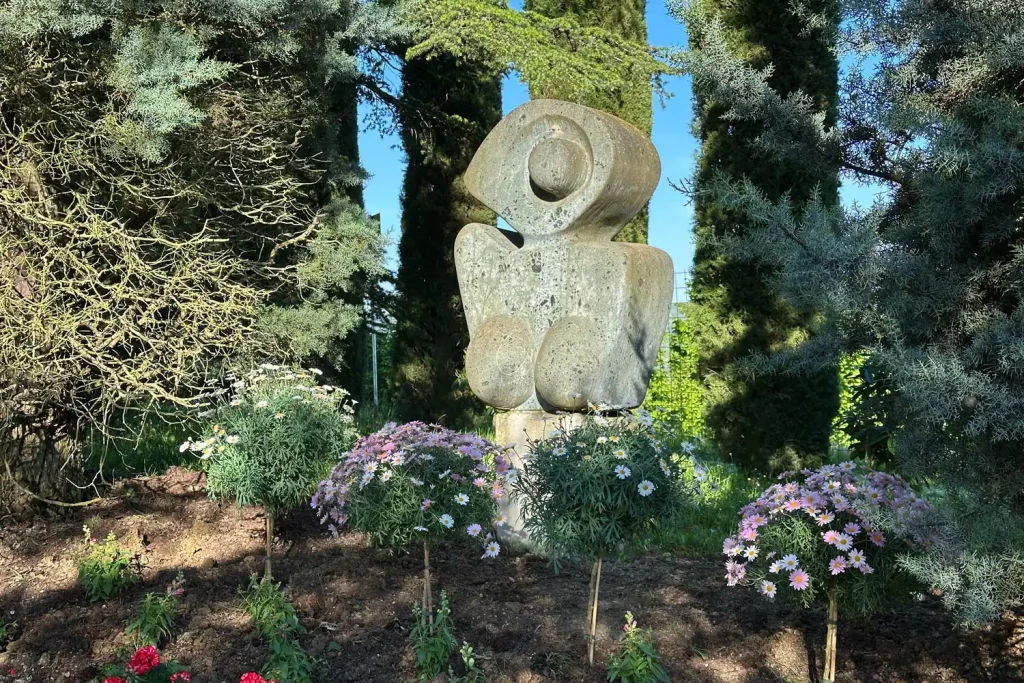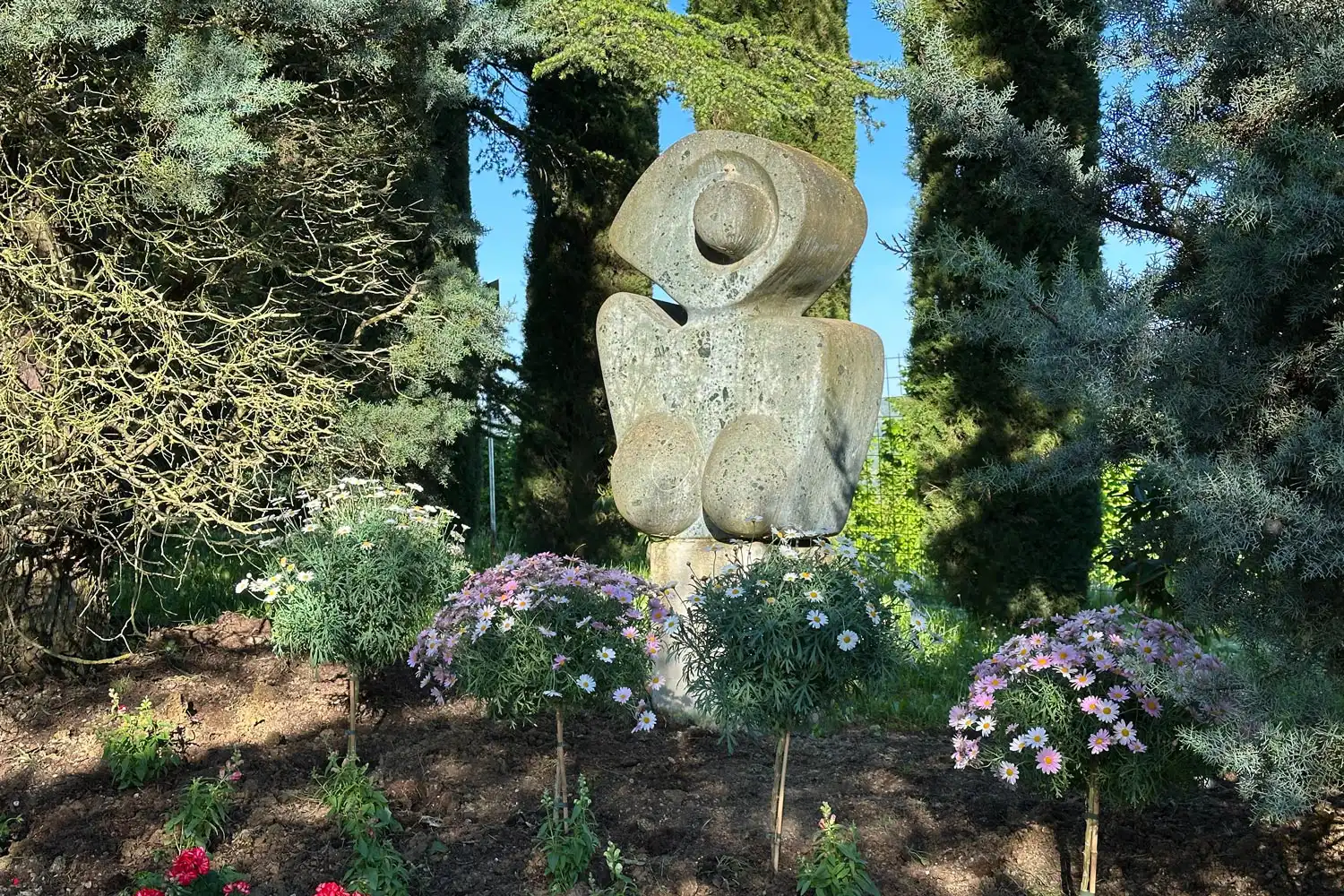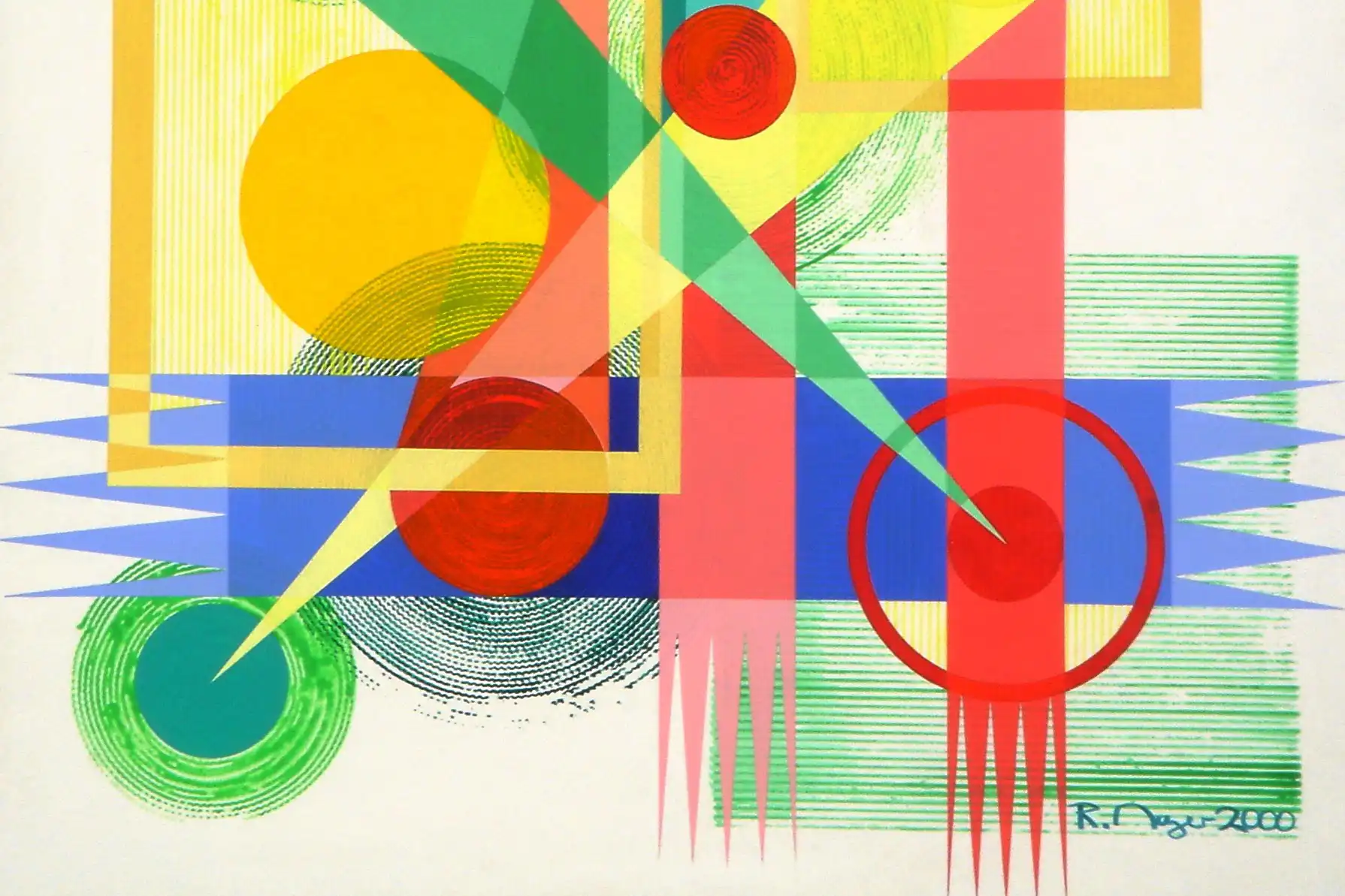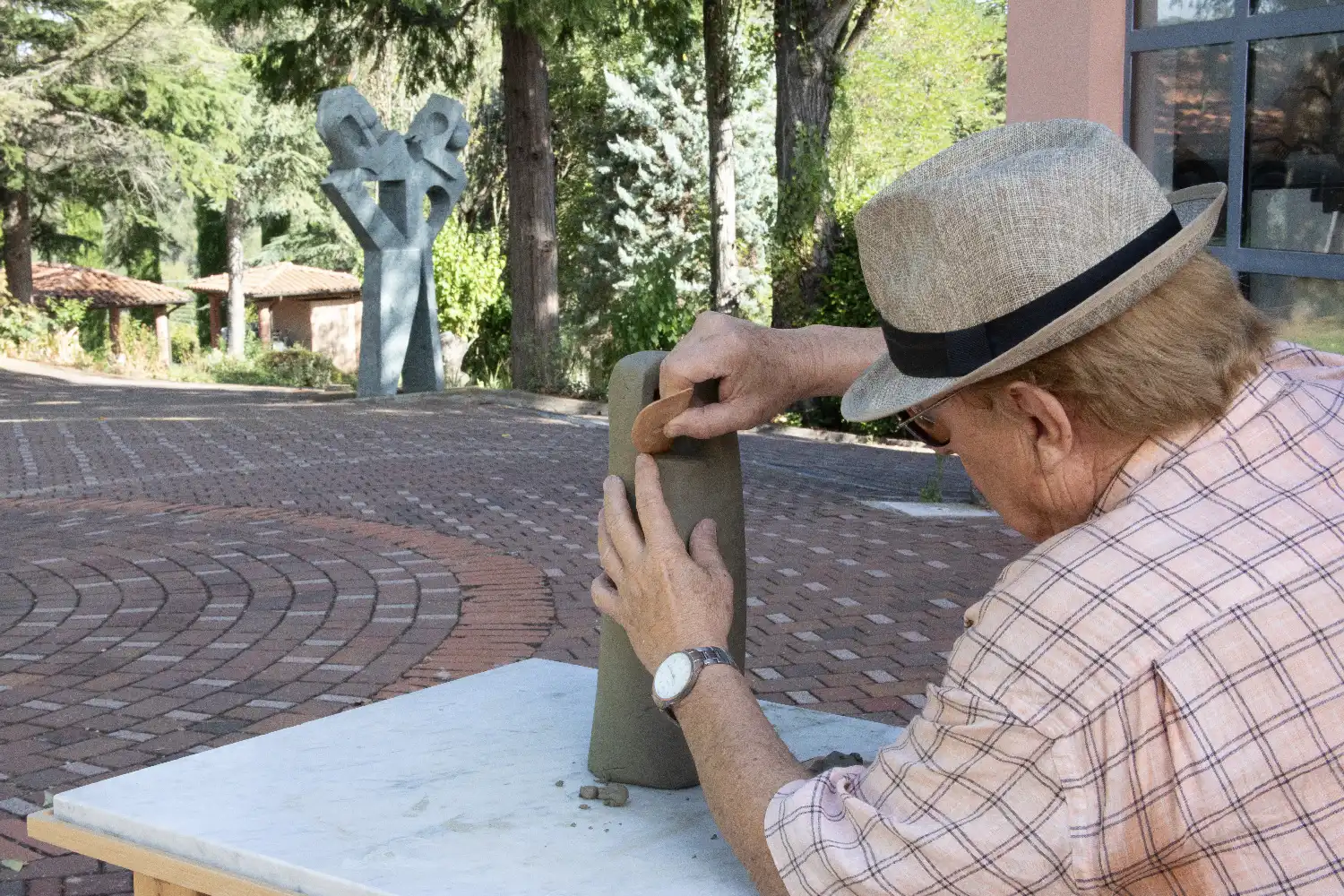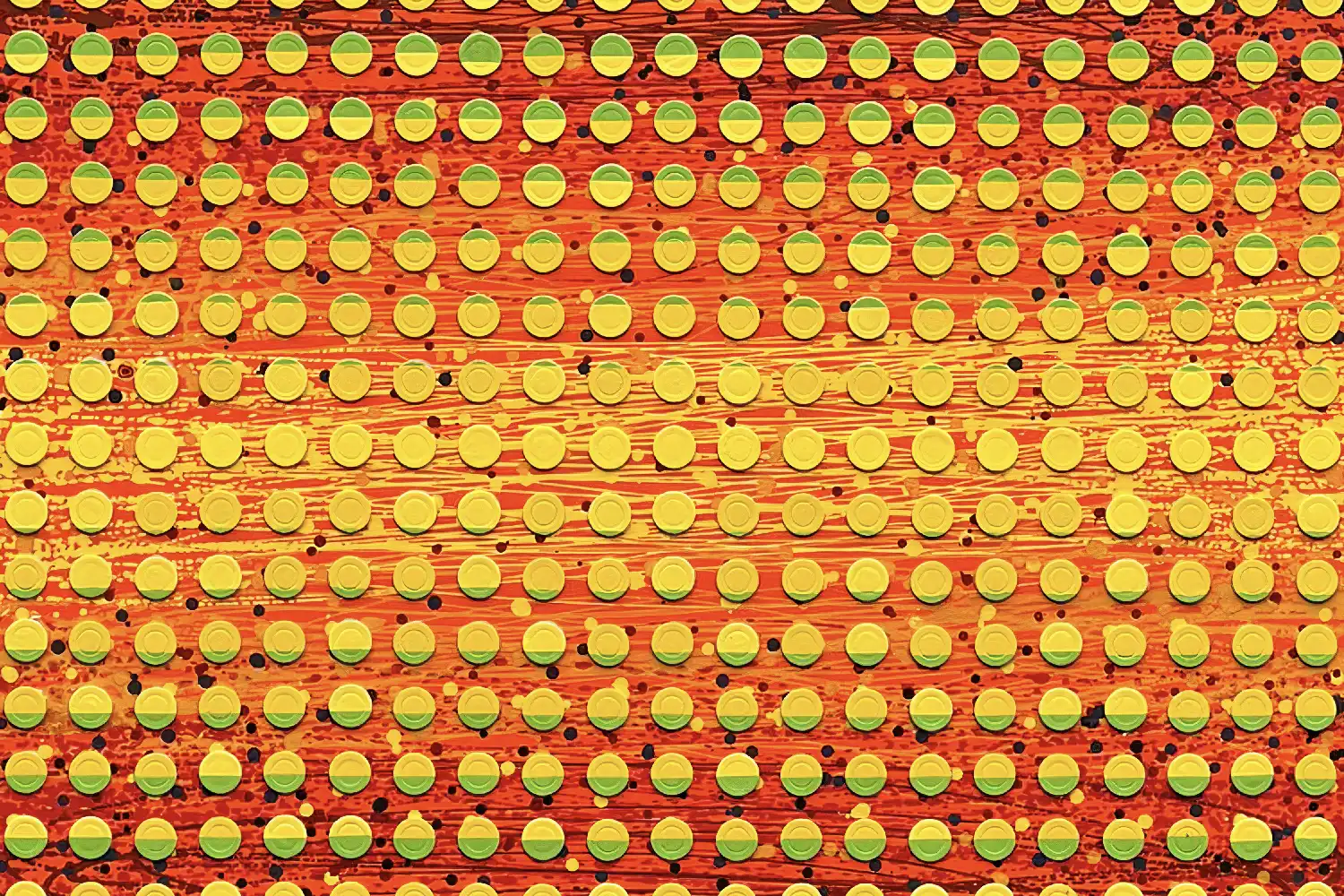For more than half a century, René Mayer worked away from public view, prolifically creating canvases and sculptures without concern for dissemination. It was only in 2023 that his work emerged publicly, unveiling a corpus of great coherence, built in solitude, exploration and rigor. His sculptures and abstract paintings unfold around fundamental tensions: weight and lightness, surface and volume, stillness and energy. Far from doctrines and fashions, René Mayer develops a formal language where the pictorial and the sculptural engage in dialogue within the same economy of means. His creations seek to open a space of perception, inviting us to slow down and see differently.
A discreet work – a demanding presence
For fifty years, René Mayer produced work behind the scenes, without a career plan or need for recognition. This distance allowed him to construct dense, patient work, where each piece developed according to an internal logic. His sculptures and abstract paintings arise from gesture, matter, and a persistent search for balance; each canvas and each sculpture impose an immediate, vibrant and demanding presence.
Exploring a formal language – perception and tension
René Mayer’s universe functions like an alphabet of elementary forms: circles, lines, full or hollowed-out volumes. Combined and recomposed, they build a language where weight and transparency, balance and fragility confront each other. The artist’s hand never exhausts the surface, it reveals it. Every tint, every line or polish preserves the memory of an adjustment. The viewer is invited to retrace this path: first grasping the whole, then discovering the tensions that animate it. Sculpture and abstract painting thus become a device of perception, an art of concentration.
Abstraction without doctrine
For René Mayer, abstraction does not stem from a school or a manifesto. It proceeds from a constant attentiveness to space and composition. Colors are tested, layered, balanced until they vibrate. The compositions seem simple, but they thwart decorative effect through sudden voids, ruptures of symmetry, and subtle shifts. Everything rests on a controlled economy: few elements, but each charged with tension. Sculpture and painting become a tool of visual thought, a way to explore unstable equilibriums.
An abstract sculpture in constant motion
The sculptures, particularly the Viva Viva series, transpose these tensions into space. There is no naturalistic or symbolic reference: the forms live by their own laws. Their balance is precarious, animated by an internal energy that gives the impression they might tip or release. Color, applied with directness, intensifies this dynamism. Each sculpture imposes a physical presence, at once fragile and firm.
With the “Marmor & Granit” series, Mayer entrusts the final execution to specialized workshops, working from clay models. These often monumental works nonetheless preserve the accuracy of the initial gesture. Stone becomes the expression of manually fixing vibration in a durable material. This dimension highlights the continuity between his sculptural works and abstract paintings, where hand and color always work together
Color and volume – a productive tension
For René Mayer, color is never an addition: it builds form. In his sculpture and abstract painting, it acts as an active force, sculpting space, accentuating, destabilizing a balance. Red, blue, green, or yellow function as vectors of tension capable of altering the perception of volume. Drawing, matter, and color belong to the same living system. This fusion creates an abstract body of work that does not separate disciplines but accentuates them.
Art without claims – but with ethics
René Mayer defines himself above all as a craftsman, attentive to gesture and matter. No manifesto, no slogans: only fidelity to the time and demand of precise work. His commitment is ethical rather than discursive: refusing ease, accepting patience, providing the viewer with an honest space for contemplation. His works, whether paintings or sculptures, carry the same rigor: no gratuitous virtuosity, but a constancy and conceptual rigor that commands respect. Thus, his sculptures and abstract paintings stand out through coherence, rooted in discipline and accuracy.
The late discovery of a body of work
Until 2023, his work had circulated only within an intimate circle. The exhibition at Spazio Arte Bubbio, entrusted to late curator Luca Beatrice, marked the first public presentation of a large body of work. This unveiling was not a strategy: it responded to an inner necessity, an urge to share what had been created for many years. The public discovered the coherence and breath of his practice, consisting of entire series — “Boxes”, “Viva Viva”, “Marmor & Granit” — that had remained out of the spotlight for decades. This emergence from the shadows invites reflection on the very notion of visibility: in what ways does a body of work mature in secrecy and how will exhibiting it impact the work to come?
Conclusion – the strength of consistency
René Mayer’s sculptures and abstract paintings assert themselves as a patient inquiry, free from trends and pressures. They explore the intersection between form, color, and matter and invites the viewer to pause. Each work, whether canvas or volume, offers an experience of slowness and concentration, connecting to a deep universal feeling of stillness. Discovered late, this body of work testament to consistency, creative freedom and a fidelity to gesture, to balance, and to time. Its strength lies not in spectacle, but in the underlying emotions that stem from Mayer’s abstraction.

